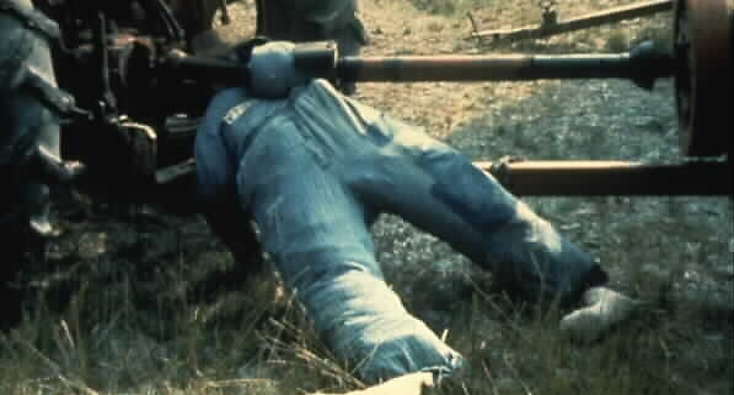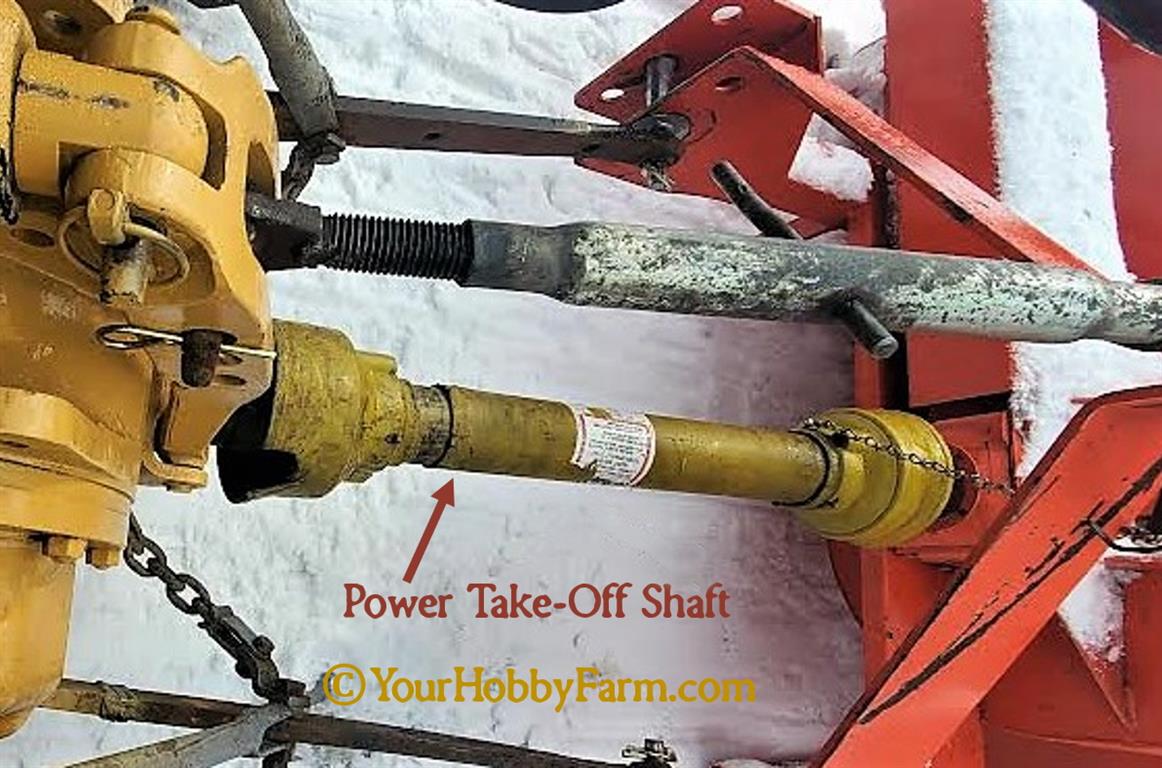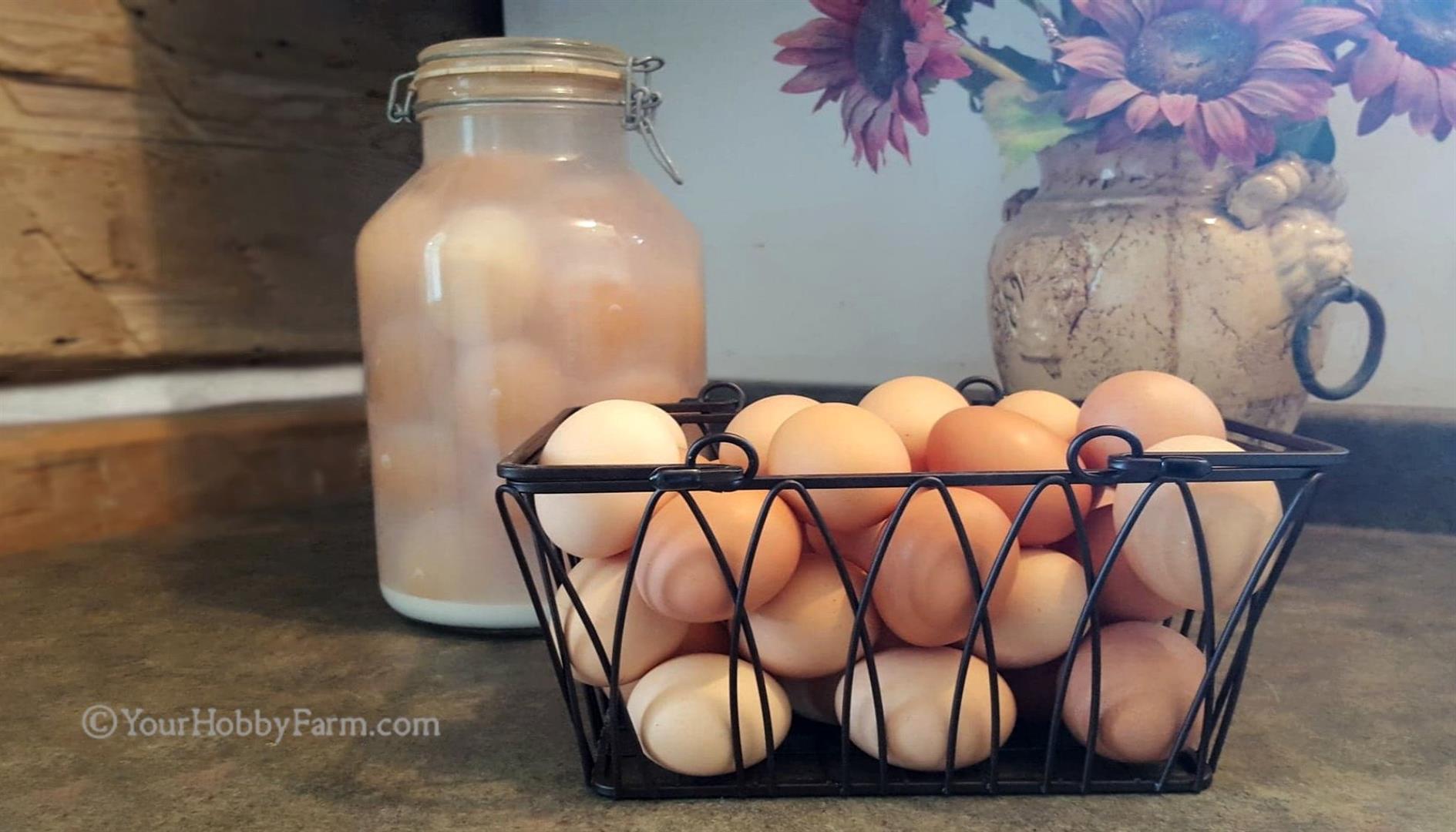Power Take Off Safety
Hey friends and followers! We're changing our website address from YourHobbyFarm.com to HomesteadJoys.com.
With ongoing homestead responsibilities, this transition may take some time. Save our New Logo and QR code for easy navigation! We’d love you to join us in our journey!
 Homestead Joys Logo
Homestead Joys LogoWhile a tractor's power take off is extremely useful, power take off safety guidelines must always be strictly observed by anyone on or near the tractor and powered implement. A spinning power take-off shaft rotating at 540 to 1000 RPM, is much faster speed than any human can react to. It can easily injure or kill you. Taking the time to review these vital safety guidelines may save a limb or a life!
Typical injuries resulting from getting caught in a power take off shaft are amputations, severe lacerations, multiple fractures, spine and neck injuries or complete body destruction. Broken arms, broken legs and severe facial lacerations are common.
First of All, what is Power Take Off?
What is power take-off? And how does power take-off work?
The power take-off definition is: a device made up of gears, shafts, etc., that takes power off a tractor's running engine, transferring the harnessed energy to a separate, non-motorized attachment or implement.
Since many pieces of agricultural equipment do not generate the power needed to operate, the PTO provides power for implement operation, enabling it to them to perform a wide spectrum of useful and necessary functions.
By the way, what is a PTO? We can tell you that it doesn't mean "paid time off", especially to a farmer! PTO is the commonly used acronym for "power take off". Both the name and this acronym are used interchangeably.
What is RPM, Horsepower, and Torque All About?
If you're new to farm tractors and implements, here are some other important things to understand and some terms that are frequently used... They may seem like unimportant details, but they will help you understand a bit how the PTO works as well as what makes it so dangerous in a careless moment.
What is 540 RPM and 1000 RPM when talking about a spinning power takeoff shaft? What are the differences between the two, and why is it important?
First of all, what is RPM? RPM is the acronym for Revolutions per Minute. RPM is a unit of rotational speed or the frequency of rotation around a fixed axis. The number before RPM is the number of turns in one minute. The RPM used, or required, depends on the horsepower of the tractor and size of the implement.
What is Horsepower? Horsepower or HP, is a unit of measurement of power, or the rate at which work is done, usually in reference to the output of the engine. Horsepower is a factor of torque multiplied by speed. With X amount of torque on the PTO shaft, if it's turning at 1000 RPM, it is transmitting nearly double the horsepower of 540 RPM
And, what is torque? And how is it related to horsepower? Torque is the measure, in foot-pounds (ft-lbs), of the force to rotate the body to which it is applied, causing an object to rotate on an axis. This determines the amount of work an engine can perform, while horsepower is the measure of how quickly that work can be done.
This farmer is demonstrating on a straw-filled dummy what can happen to a person
when coming into contact with a spinning power take-off shaft. Source
The speed of the RPM, the strength of the horsepower, and power of the torque all work together creating the PTO's extreme usefulness. Understanding these terms makes it very clear how vitally important power take-off safety is!
The Importance of Power Take Off Safety
Always Use Caution: PTO Can be Very Dangerous!
Because a PTO is both very useful and very dangerous, it's extremely important to fully understand power take off safety! Severe injury or death can result from accidents when power take-off safety guidelines aren't followed. "According to the National Safety Council (USA) and Health & Safety Executive (HSE) (UK), a high percentage of tractor related fatalities in the USA & UK involved the PTO." Source
Every year people are seriously injured or killed in accidents involving PTOs and PTO drive shafts.
Lack of caution when dealing with the strength and force of the PTO, the high speed of rotation, operator carelessness or error, and lack of proper guarding used on the equipment can be a life-changing injury or fatality waiting to happen.
What Are Some Power Take Off Safety Rules?
First of all, always familiarize yourself with all safety precautions needed before operating or helping with the machinery. You may be in a hurry, but shortcuts are simply not worth it! Here are a few basic but very important safety guidelines:
- Always read any safety instructions that come with your tractor and implements and leave safety stickers on your equipment in place.
- Make sure that the shafts of the power take off assembly are properly connected.
- Keep all components of PTO systems shielded and guarded at all times.
- Always shut off the tractor AND disengage the PTO before dismounting to clean, unclog, repair, service, or adjust machinery.
- Instruct all operators and helpers about the hazards of the PTO.
Caution! Baggy clothing, fabric hanging loose or open, hoodie ties, shoe or boot laces, long hair, etc. all pose a great danger when anywhere near a spinning power take off shaft!
Always keep in mind that the time it would take you to react is a snail's-pace compared to the rotational speed of the spinning power take-off shaft! Getting snagged into a turning PTO shaft can happen in a split second.
Here are some guidelines to follow to prevent PTO entanglement and its potential for injury and death:
- Wear clothing that is close fitting and without loose ends to prevent entanglement of loose pieces of fabric.
- Always tie up long hair and keep it under a hat when working around the PTO.
- Always walk around tractors and machinery instead of stepping over a rotating shaft.
- Children are curious! Keep them safely away from all operating machinery, not just the PTO.
Please take the time to watch this short but important video by the University of Minnesota Extension Farm Safety and Health covering the basics of PTO parts, hazards, and safety.
Power take-off accidents are usually a result of a moment of human carelessness. They can include severe contusion, cuts, spinal and neck injuries, dislocations, broken bones, or scalping. Sadly, a significant number of incidents result in fatalities. We personally know a man who lost his arm in this way when he was younger. His life was spared, but in time, his accident led to other heartaches.
Visit here for more advice on power take-off safety.
As you've seen, while the power take off has provided great versatility in the mechanization of farming, it is accompanied by great dangers as well! Be preemptive and proactive when it comes to personal safety! Always think "Safety First"!! Observing power take-off safety carefully will protect yourself and those near you against any risk of danger rather than pay the price of carelessness.
Translate This Page!
Traduire Cette Page!
¡Traduzca Esta Pagina!



Piping Rock©
Bringing you the highest quality In hundreds of health care and life-enhancing natural products at the
lowest cost to you!
high reviews, crazy deals,
happy, healthy customers!
Click here and save today!
Business Appreciation
* This website is not affiliated with
Piping Rock

Supporting our local feed mills
Meunerie Alexandria Milling
613-525-1973
Great Products • Great Prices
Great Service
Click the pic for their
facebook page!
Meunerie Alexandria Milling
Established in 1962 by The Massie Family
Email: Alexandriamilling@hotmail.Ca
475 Massie Crescent
Alexandria, Ontario, Canada
~~~
Small Business Appreciation
* This website is not affiliated with
Meunerie Alexandria Milling



















